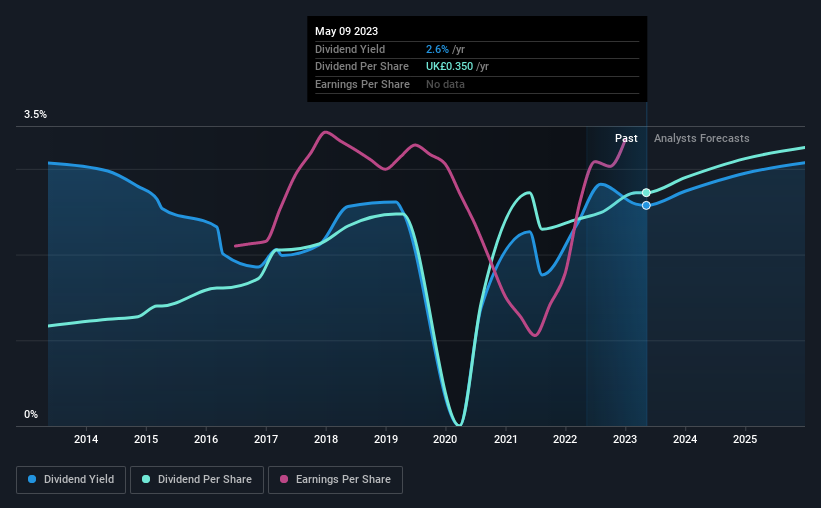- United Kingdom
- /
- Metals and Mining
- /
- LSE:HILS
Hill & Smith (LON:HILS) Is Increasing Its Dividend To £0.22
The board of Hill & Smith PLC (LON:HILS) has announced that it will be paying its dividend of £0.22 on the 7th of July, an increased payment from last year's comparable dividend. This takes the annual payment to 2.6% of the current stock price, which unfortunately is below what the industry is paying.
View our latest analysis for Hill & Smith
Hill & Smith's Earnings Easily Cover The Distributions
The dividend yield is a little bit low, but sustainability of the payments is also an important part of evaluating an income stock. The last payment was quite easily covered by earnings, but it made up 98% of cash flows. The company might be more focused on returning cash to shareholders, but paying out this much of its cash flow could expose the dividend to being cut in the future.
The next year is set to see EPS grow by 47.8%. If the dividend continues on this path, the payout ratio could be 36% by next year, which we think can be pretty sustainable going forward.

Dividend Volatility
Although the company has a long dividend history, it has been cut at least once in the last 10 years. Since 2013, the annual payment back then was £0.15, compared to the most recent full-year payment of £0.35. This works out to be a compound annual growth rate (CAGR) of approximately 8.8% a year over that time. A reasonable rate of dividend growth is good to see, but we're wary that the dividend history is not as solid as we'd like, having been cut at least once.
Hill & Smith May Find It Hard To Grow The Dividend
Given that the dividend has been cut in the past, we need to check if earnings are growing and if that might lead to stronger dividends in the future. However, Hill & Smith's EPS was effectively flat over the past five years, which could stop the company from paying more every year.
The Dividend Could Prove To Be Unreliable
In summary, while it's always good to see the dividend being raised, we don't think Hill & Smith's payments are rock solid. While the low payout ratio is a redeeming feature, this is offset by the minimal cash to cover the payments. This company is not in the top tier of income providing stocks.
It's important to note that companies having a consistent dividend policy will generate greater investor confidence than those having an erratic one. At the same time, there are other factors our readers should be conscious of before pouring capital into a stock. Taking the debate a bit further, we've identified 1 warning sign for Hill & Smith that investors need to be conscious of moving forward. Looking for more high-yielding dividend ideas? Try our collection of strong dividend payers.
Valuation is complex, but we're here to simplify it.
Discover if Hill & Smith might be undervalued or overvalued with our detailed analysis, featuring fair value estimates, potential risks, dividends, insider trades, and its financial condition.
Access Free AnalysisHave feedback on this article? Concerned about the content? Get in touch with us directly. Alternatively, email editorial-team (at) simplywallst.com.
This article by Simply Wall St is general in nature. We provide commentary based on historical data and analyst forecasts only using an unbiased methodology and our articles are not intended to be financial advice. It does not constitute a recommendation to buy or sell any stock, and does not take account of your objectives, or your financial situation. We aim to bring you long-term focused analysis driven by fundamental data. Note that our analysis may not factor in the latest price-sensitive company announcements or qualitative material. Simply Wall St has no position in any stocks mentioned.
About LSE:HILS
Hill & Smith
Manufactures and supplies infrastructure products in the United Kingdom, rest of Europe, North America, the Middle East, rest of Asia, and internationally.
Flawless balance sheet average dividend payer.
Market Insights
Community Narratives




